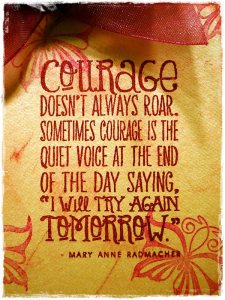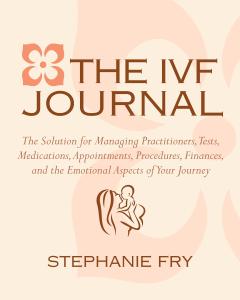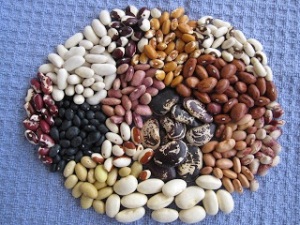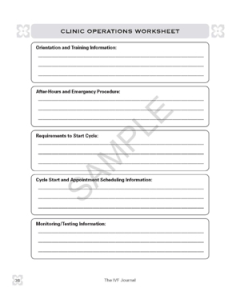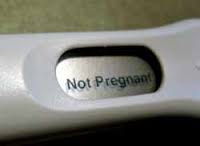Anyone who is battling infertility and undergoing IVF treatment knows that there are loads of options when it comes to selecting complementary treatments and therapies. There are diets, exercises, mind body options, acupuncture, acupressure, massage, yoga, herbal remedies and so much more.
With all these options, deciding on a complementary treatment can feel just as overwhelming as struggling with infertility. It can be pretty hard to find your thing.
As you consider complementary treatments consider this advice from The IVF Journal,
“Do What Feels Right. As you go through IVF treatment you are likely to come across loads of different types of tips, advice, and complementary therapy options. As you encounter and consider these things, always remember that while there are plenty of experts out there, there is only one expert on you. Make sure you listen to your heart and your body throughout the entire process. Whether it is a new diet, a new mind-body technique, advice on how much you should exercise, or what vitamins to take, if something you are doing doesn’t feel right, honor that feeling. Know that while it may have worked great for someone else, that doesn’t mean it is right for you.” – The IVF Journal

The reason I give this advice is because I spent quite a few years trying to find my thing when it came to supporting my IVF treatment.
To help myself sort things out I decided to look at the world of complementary treatments for IVF as one where I could be adventurous and try new things. I was saddled with the ever present waiting that is a side effect of infertility treatment so this new world also provided me with something positive to focus on while I endured the many waiting periods that go hand in hand with extended IVF treatment.
I developed a little mantra: Explore, research, discover. And armed with that mantra I jumped in and started trying things out.
I started with what I felt would be a no brainer for me: Yoga. I already knew that practicing Yoga had so many amazing benefits for both mind and body and my (limited) experiences with the practice thus far had been really positive. I couldn’t wait to get started and signed up for an awesome local Yoga for Fertility class. After a few weeks I was really bummed to learn that my body was not quite where my mind was when it came to yoga. Surprisingly it just didn’t feel right. So back to the drawing board I went.
(Side note: I know and work with so many wonderful yoga instructors, acupuncture and other practitioners who are doing wonderful things for people going through infertility so please don’t take these anecdotes as a reason not to try yoga or acupuncture or any other practice – the whole point is to find what works for you, not me.)
Next I tried and initially loved acupuncture. There are so many great reasons to do acupuncture – studies abound on its benefits and there are loads of wonderful practitioners and centers that specialize in fertility and IVF related acupuncture. Many of the women I have cycled with swear by it. But, in the end, when I really considered all the elements of extended treatment it just wasn’t a sustainable practice for me.
So I moved on, determined to find my thing.
I tried reiki and massage – good but not exactly what I felt I was looking for. I dabbled in herbal supplements and diet changes, that wasn’t my thing either. And then one day my therapist suggested meditation.
As a fairly hyper (ok, very), Type A, who really doesn’t like sitting still, I was pretty skeptical about meditation. But, I was in experimentation mode so I figured it couldn’t hurt to try.
What do you know, meditating felt pretty good. Unfamiliar, definitely. A bit uncomfortable at first but mostly just, really good. And calming. Wow. I would have never guessed. So I decided to try it on for a while. And much to my surprise, it stuck.
I think finally found my thing.
As I continued with the practice I came to realize that meditation worked for me on so many levels. For one thing, the length and timing of the practice was right up my alley – really flexible. No travel required, no appointments to keep.
More importantly meditation helped me to slow down and relax my mind and my body. This led to me becoming more self-aware and was the catalyst to so much positive change in the way I handled my infertility. Finally, and more simply put, I was less stressed. I felt calmer, more balanced and therefore stronger than I had in so long.
Hooray! I definitely found my thing!
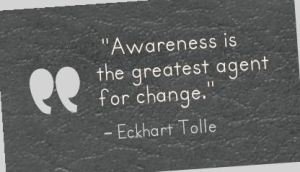
If you haven’t tried mediation yet, absolutely give it a try and check out my Mindfulness and Self-Awareness pin-board. If it isn’t your thing, don’t worry. Just keep exploring and your thing will eventually reveal itself.
If you are on the fence about trying complementary therapies consider the following from The IVF Journal, Chapter13: Don’t Go it Alone: Complementary Therapies and A Support Network
“Complementary therapies are a great form of support for IVF patients and can greatly enhance your experience. They can help you to reduce stress and feel more relaxed and can improve your physical and emotional health as well. They also provide positive ways to pass the time during a cycle, especially during waiting periods. Some popular options include mind and body programs, yoga, meditation and visualization, acupuncture and massage. If you are employing or interested in exploring these or other options, start by asking your clinic and other contacts for information and referrals, or use the organizations and contacts in your support network to search for practitioners in your area. You can also turn to the National Center for Complementary and Alternative Medicine. This is a United States government resource and a good place to research your options. Their information can be found at http://www.nccam.nih.gov.
No matter what type of practice you are considering, most therapies have different styles, pricing, and practitioners available. To get the most out of any treatment, you should feel comfortable with all aspects of the program, including price, location, schedule, and instructor or technician. It is important to note that complementary therapies can provide great benefits for some, but if a certain practice is not your cup of tea, then you should not feel compelled to use it. If you are doing something that you don’t enjoy, the stress of stress relief can ironically do more harm than good. You should only do what you feel comfortable with, and if that does not include complementary therapies, then you should not feel obligated to pursue them.” – The IVF Journal


